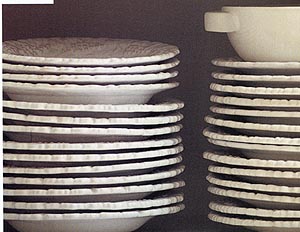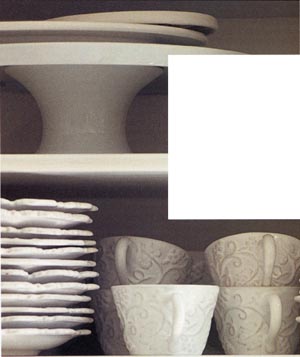WHAT NEEDS STORING?
First use the checklists at the end of the chapter to kick-start a personalized list of what needs storing. Once you have the basics on paper—foodstuffs, cooking equipment, tableware, and so on—you can begin to categorize items to provide the most user- friendly arrangement. Don’t forget to include extras such as a radio or cookbooks, which may be just as much a part of kitchen life as the sink.
Given that most of us eat in the kitchen, you’ll need plenty of space for tableware, flatware, and assorted extras such as serving plates. If eating areas are split into a formal table and a breakfast bar, it may help to divide “best” tableware and everyday items, sitting them in separate areas close to each zone. By contrast, all key equipment, from pans to blender, must go in the cooking area. Think about small electrical appliances. The coffee maker and toaster should be immediately accessible: rarely used gadgets such as an ice-cream maker can be stored.
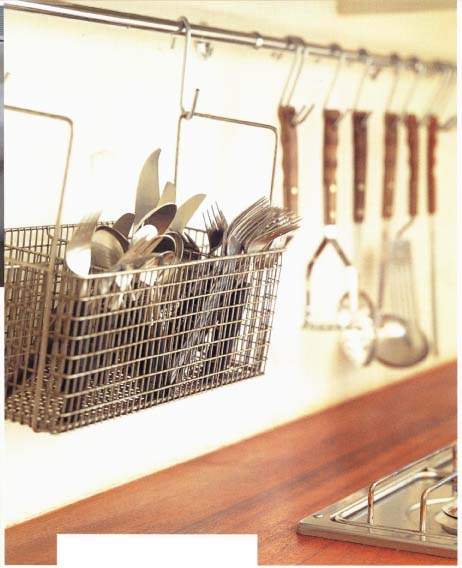
ABOVE:
Cooking implements are best located next to the cooktop. For efficiency, mount
a long steel rail to the backsplash, and hang a matching set from individual
butcher’s hooks. If drawer space is lacking, a metal basket can organize knives and forks.
Need to see some organization products?
Visit our online home-organization products shops:
Food storage requires special attention. You need room in the fridge, vegetable baskets, and bread bin for fresh foods, plus plenty of cupboard space for dry goods. As well as grouping like with like—oils and spices, pastas and rice—consider arranging foods according to weight (with heavy items stored low) or height (such as tall cereal packets or bottles of oil).

ABOVE:
Dry foodstuffs should be kept fresh in well-sealed jars. Glass jars, lined en
masse along a shelf or countertop, provide a decorative and practical display.
Finally, check all categories, and concentrate all daily essentials—from food to gadgets—in the most convenient places. It’s your style choice whether they are in cupboards, on the counter, or hanging up. What matters most is that they are located between waist height and eye level, to avoid constant bending. Allocate remaining top cupboards or low drawers for infrequently used things like picnicware.
BELOW: There’s an art to stacking tableware. Nestle serving bowls one inside another, but locate them on a low shelf so access is easy. Try to keep plates and bowls in individual piles, so you don’t constantly have to shift one stack to get to another.
BELOW: Cookbooks and small appliances need to be out on show, but they clutter a counter. Keep them neat in a built-in niche.
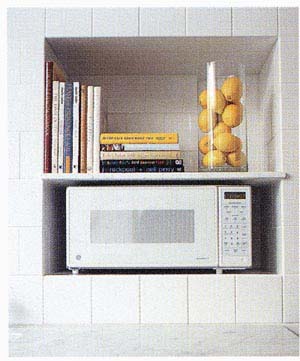
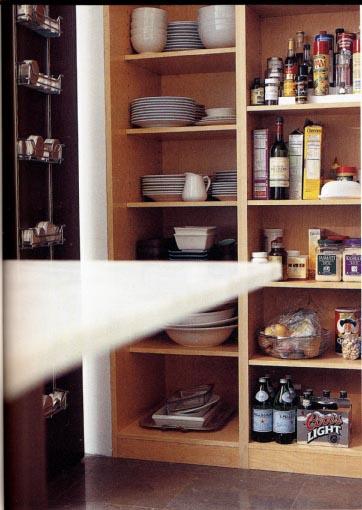
BELOW: Dishes are most efficient piled up one layer deep in the cupboards. When building new storage, measure the biggest plates for depth.
